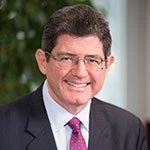It might sound improbable to hear a CFO say this, but I consider one of my roles since joining the World Bank Group to be that of matchmaker. Let me explain.
As I have noted in other blogs over recent months, the world’s emerging market and developing economies—EMDEs for short—face an enormous gap in infrastructure investment. Certainly it is not the only big financing challenge that countries face as they work to reduce poverty and extend prosperity to more of their citizens. But infrastructure underpins many aspects of economic growth, getting people to jobs and schools, connecting goods to markets, reducing the isolation of the poorest areas in many countries. And by some estimates, the sector’s funding gap is as high as a trillion dollars.
But understanding the scope of this need is just the first step to finding solutions. And I’m happy to say that there is a major paradigm shift underway. At the 2015 Addis Ababa conference on Financing for Development, many of the world’s countries, bilateral aid agencies, and multilateral development banks embraced the need to attract private capital flows and put them to work if we are to meet the challenges of development.
This shift is already changing the largest development institution for low-income countries, the International Development Association—IDA, part of the World Bank Group. For the first time, IDA will raise funds in the market, increasing its capacity in the next three years by 50 percent. With a strong rating from credit agencies, IDA will soon be issuing low-risk bonds. It will also work more closely with our private sector arms, IFC and MIGA, helping reduce the risk facing private sector investors in poorer countries, through a special funding window. These efforts will help create markets, with the private sector contributing to development even in challenging, fragile countries.
The new approach opens a wide range of opportunities in EMDEs, from Latin America and India, to Africa and Southeast Asia—supported, when necessary, by public mechanisms to make the opportunities compatible with the risk capacity of the private sector, notably long-term investors. Involvement from the World Bank Group will also help keep the focus on resilience to pressing challenges, such as climate change, pandemics, and migration.
But while we are matchmaking between private capital and development needs in a general sense, I also have a more specific idea about infrastructure investments in EMDEs. It turns out that these may be a perfect match for many advanced economies that are wrestling with the long-term sustainability of their pension systems. These countries are seeing their populations age (and in some cases shrink), but the returns of their pension funds remain persistently low, reflecting low returns in their capital markets overall and creating a troubling pension gap. Recent studies suggest that funds need investment returns of around 5 percent to close this gap, well above the average rate of return they have seen in recent years.
And while many pension funds need new, better sources of returns, infrastructure could be a natural fit, as a large, long-term asset yielding predictable and robust cash flows, with low correlation to other assets. For their part, pension funds represent a vast potential source of infrastructure funding, as the second-largest group of institutional investors, with global assets under management of about $26 trillion. And as I noted in a recent blog, there has been progress in mapping the landscape for investing, with a pipeline across EMDEs worth several hundred billion dollars of investment opportunities having been identified and in various stages of detailing and risk evaluation.
As with any good match, EMDEs and advanced economies have a lot to offer each other. But first they need to get to know each other better, with patience and an open mind. The World Bank Group and other multilateral development banks see the potential in bringing them together. We are committed to helping this happen, and we are ready to engage with member countries and use our knowledge and balance sheet in innovative ways.


Join the Conversation